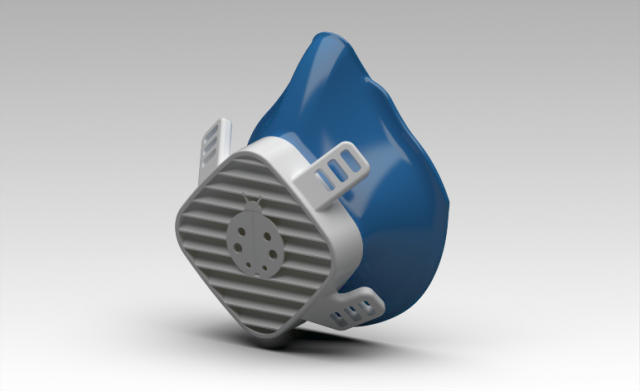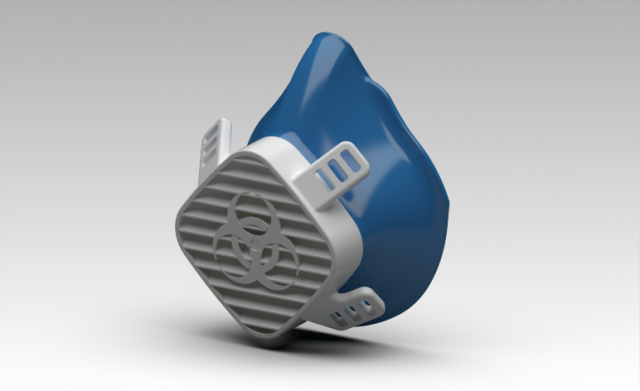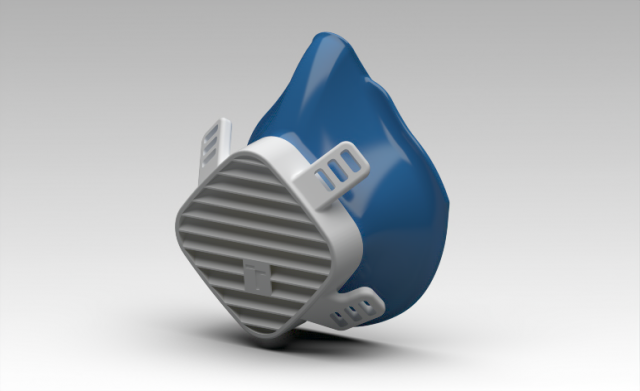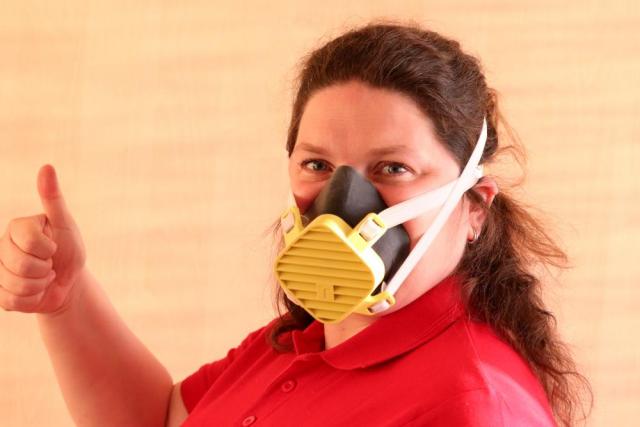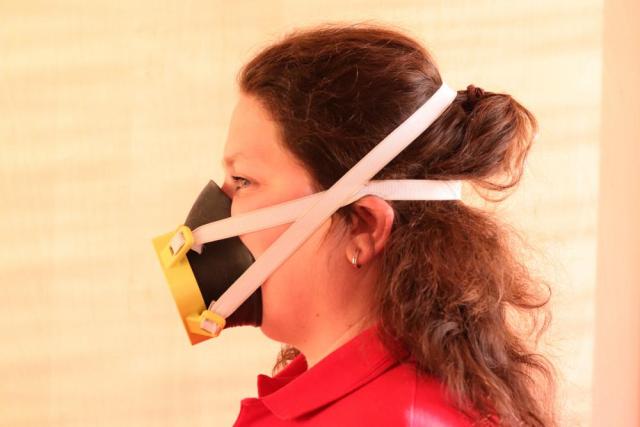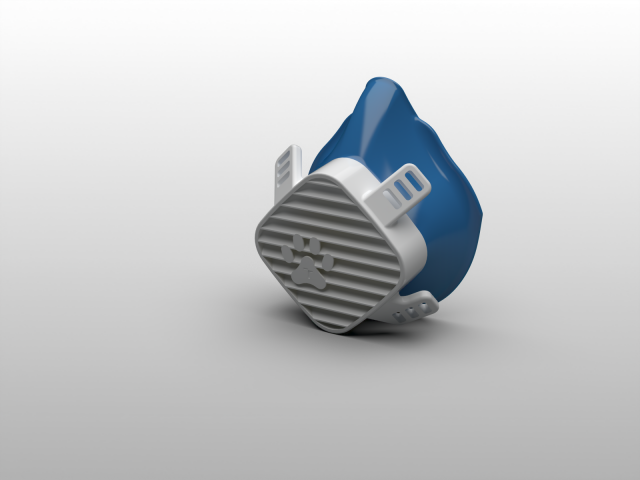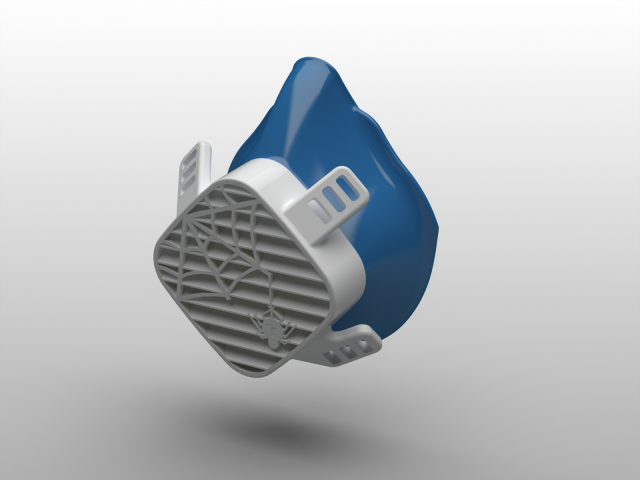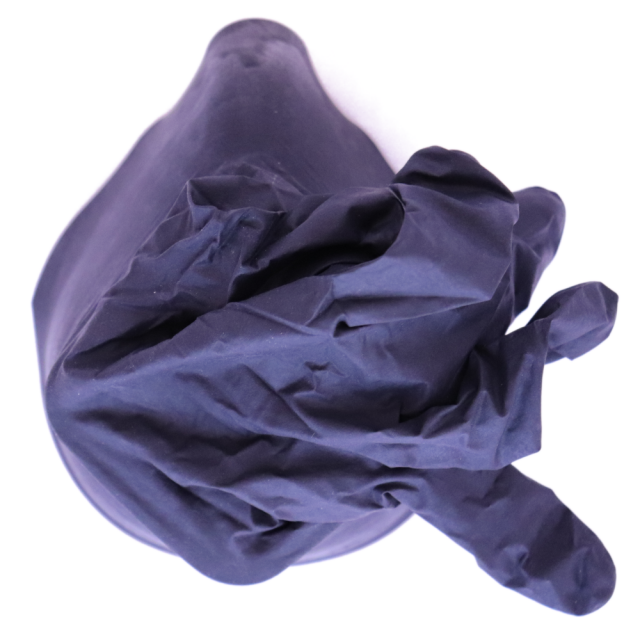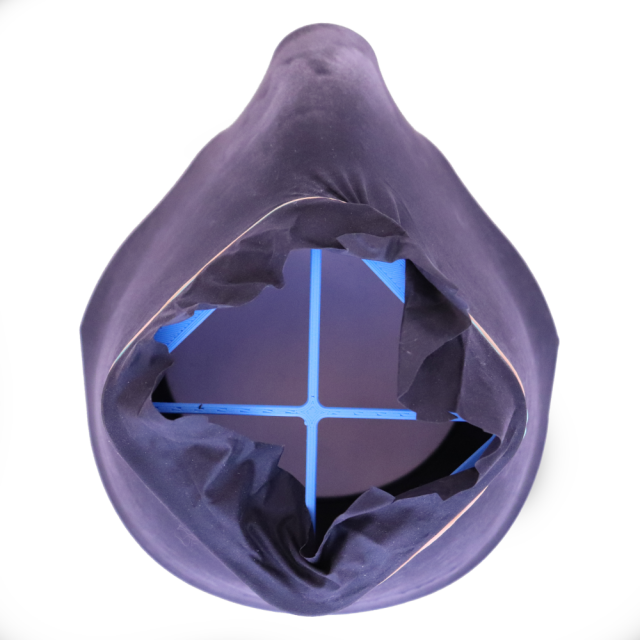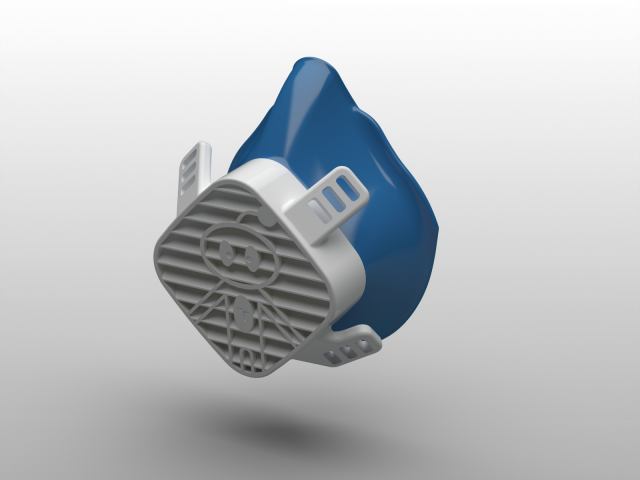COVID-19Protection
Halfmask BUT–H2
BUTMASK–H2
WHAT IS BUTMASK-H2?
Utilizing the feedback provided by the printers‘ community and expert opinions of the initial version, we designed the BUTMask-H2, a substantially revised product with the following features:
- Markedly improved user characteristics: The original version H1 proved to be very uncomfortable if the size had not matched perfectly; thus, we modified the shape of the product to better distribute the pressure on the face and to reduce the discomfort in, above all, the nasal area.
- More sizes available: As custom-made hard plastic parts will never deliver the relaxed feeling and face adaptability of commercial soft plastic components, the utility of our half mask closely relates to finding the right size. To satisfy the widest set of users, we designed more size variants than offered in commercially marketed products.
- Children’s options: For children and adults alike, the conveniently trimmed XS and XXS sizes are at hand. The half mask is not to be provided to minors who, if unassisted, cannot put it freely on or off the face in problematic situations. A child wearing the mask must not be left unattended, requiring continuous communication with an adult.
- A larger XL size.
- Less air leaks when on the face: Importantly, the efforts to optimize the product’s shape not only increased the user comfort but also reduced the air leakage, such that where already the H1 version yielded very good measurement results, the improved model exhibits superior tightness.
- Modified filter housing: The preliminary tests showed that an original, good quality vacuum cleaner bag can be employed as a suitable improvised filtering medium. To facilitate smooth functioning of the filter, we adjusted its housing room and locking elements, thus decreasing spurious pressure on the bag’s active surface.
- An innovated set of headstraps: A close fit on the face is ensured only when the straps have been attached to the head reliably. For this purpose, cross-tied fastening is recommended (the upper straps run above the ears while the bottom ones intersect them at the temples and run on to the crown of the head).
- Indirect venting via lamellae: The filter is partly protected by lamellae preventing diverse particles and droplets from impinging directly on the filter’s surface; moreover, the lamellae direct the exhaled air downwards to eliminate its straight impact on another person’s body
In case the previous version of the mask was not as comfortable as you expected, you may try our new model BUTMASK-H2.
Compared to a simple 3D-printed version, this original product including a sleeve brings the following advantages:
- Multiple sizes available
- Full sealing thanks to the applied glove
- Good face shape adaptability, meaning optimal tightness
- Face skin contact only with the actual material of the disposable glove
- A sleeve-protected structure eliminating external contamination completely
- A sleeve quick and cheap to replace or disinfect.
Basic information
The protection provided by a half mask, surgical mask, or respirator depends mainly on a tight face fit; the filtering capability of the applied medium is only a secondary parameter. Even improvised filtering instruments substantially reduce the virus contraction risk, although their protective performance cannot match that of a classic tool.
This product is intended for non-professional use, replacing regular surgical masks and respirators when these are unavailable or do not fit on tightly due to improper design or heavy everyday duty. Our half mask does not comprise an expiratory valve, and the humidity aggregates in the filtering medium; similarly to surgical masks, there then forms a potentially bacterial environment, meaning that the filter must be dried and disinfected or discarded.
Components
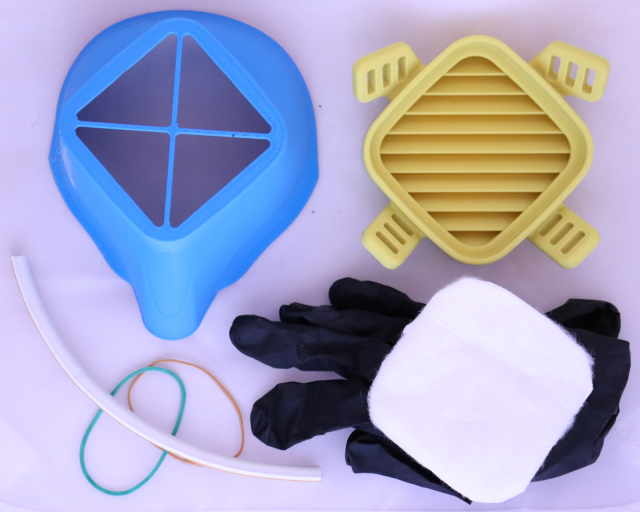
- A 3D printer capable of delivering a product with the dimensions of 13 x 13 x 7 cm; most standard devices will meet the criterion
- Printing material (filament); generally, the requirements are very minimal, and the user can employ PLA, ABS, PET, PET-G, ASA, CPE, or any relevant alternative
- An elastic, disposable, L-sized glove; other sizes may find application too, although L embodies the ideal option. Nitril gloves are recommended thanks to their durability and overall strength; a latex sleeve is also convenient but offers less reliability and must not be used by persons allergic to the substance. Condoms are also usable if necessary
- An improvised filtering insert having a square-shaped size of at least 70 x 70 mm
- Strings, elastic rubber bands, or other material to form the headstraps
- Two thin rubber ribbons (cut out from, for example, an inner tube for bicycle wheels)
- Optional: a self-adhesive rubber sealing band (such as D-profile elements).
- A pair of scissors.
Mask shape adjustment
With many printing materials there is a possibility to perform small shape corrections in order to achieve good fit. In general, only the width of the mask can be adapted successfully. Therefore since the beginning the mask must suit the user in length, i.e. choosing the right size for printing is essential.
To adjust the shape (width), please follow the steps below:
- Find out at what temperature the printing material starts to become becomes plastic (In the case of PLA, it starts to soften at 60 ° C).
- Heat about half a liter of water to this temperature (approximately). Do not use temperatures that might cause skin burns quickly!
- To prevent dangerous skin burns of sensitive children's skin, do not use this procedure for children's masks.
- Immerse approx. 1/3 of the face part of the mask in the water and allow it the mask to warm up for a few seconds. Attention! Do not fully submerge the whole mask as there is a risk of deformation of the front with the filter contact surface!
- Remove the mask from the water and try to gently adjust its shape to fit the face better.
- If needed, repeat the procedure. Be careful not to overheat the mask as the mask would be deformed.
Assembly steps
After the printing, the actual half mask body, or frame, and the filter holder both have to be refined by quickly rubbing off (with a knife or sandpaper, for instance) any sharp protrusions or edges that could damage the glove.
Rubber sealing band (D-shape) should be glued as shown in the figure on the right side.
Subsequently, the selected glove is put on the body and then cut and adjusted conveniently to wrap around the body, forming a tunnel-shaped section.
With the glove already on, a couple of thin rubber ribbons will now have to be inserted in the grooves milled in the body (frame); these ribbons will firmly lock the two structural components of the half mask together.
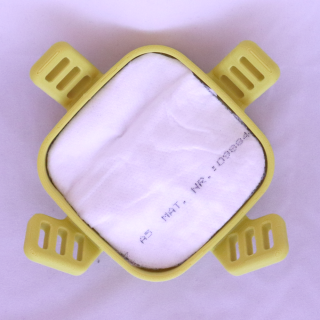
At the next stages, the filter is inserted in the holder, and the holder is attached to the frame. The rubber ribbons at the edge of the frame should ensure firm connection between the two structural parts; the number of ribbons used must be adjusted to their thicknesses.
The headstraps consist in strings or elastic rubber bands sewn or tied to the holder, and their lengths are set to fit the person.
DISINFECTION
Disinfection procedure is described here.
Responsibility: doc. Ing. Václav Kaczmarczyk, Ph.D.
